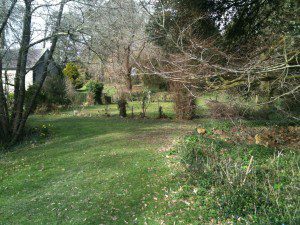I am excited tomorrow to be going on a 10 day retreat at Gaia House (www.gaiahouse.co.uk) in Newton Abbot, Devon. The retreat will be taught by Leigh Brasington, the senior American student of the late Ven. Ayya Khema (leighb.com) and is entitled Right Concentration. This is because it focusses (no pun intended!) on meditative concentration/absorption states, called Jhana’s in traditional Buddhist meditation practices.
Leigh has quite a unique method for entering the Jhana’s www.leighb.com/jhana3.htm which I interpret as: 1) generating a concentrated state using mindfulness of breathing 2) shift the focus onto a pleasant sensation for example a gentle smile on your face, relaxation, happy feeling in your heart 3) Focus on the pleasantness of the sensation and it will grow in intensity 4) Eventually it grows to bliss/euphoria (piti in traditional Buddhist terminology). From the first Jhana this grows onwards to a more peaceful joy in the second Jhana (sukha). There are further Jhanic states all with different characteristics. But these states are framed and described by different teachers in different ways (and with varying levels of importance) and so beyond the scope of this article to describe.
I am particularly interested in Leigh’s approach because he tends to look at the Jhana’s in a scientific way and has collaborated with a neuroscience lab to see what is going on in his brain when he enters these states: www.hindawi.com/journals/np/2013/653572/ in fact he proposes the following neurobiological correlates for the Jhana’s www.leighb.com/jhananeuro.htm. As a secular mindfulness teacher and practitioner (and contemplative neuroscience enthusiast/geek) this approach appeals to me.

As those who have learned mindfulness from me know, I like to frame the reasons for practicing mindfulness around 1) Managing negative experiences (stress and negative emotions) 2) Enhancing positive experiences (mindfully savouring good experiences) and 3) The experience of mindfulness itself (e.g. the relaxation response). Leigh’s approach focusses greatly around 2 and 3, therefore I’m interested to see how it can inform that aspect of my teaching.
I always like to read other teachers and practitioner’s personal experiences of meditation; it seems to teach me lots of useful things. Therefore here is my own experience of ‘playing’ with Leigh’s approach: I find I can hover around what Leigh describes as the “access concentration” level (note different meditation teachers define this level in different ways):
“Any thoughts that you have are wispy and in the background…When the thoughts are just slight, and they’re not really pulling you away, you’re with the sensations of the breath. This is the sign that you’ve gotten to access concentration.”
For me this description is very useful, there are times when seemingly thoughts drop right away, but more often the wispy background description seems a good way to describe the feeling with mindfulness of breathing. I have played with Leigh’s approach of shifting to the pleasant feeling, and I have experienced the rushes of bliss that he describes as Piti and then the more relaxed peaceful feeling that he describes as Sukha. I will take this foundation and see where I get to on the course, making sure I don’t strive for anything, as this is a sure way to reduce the depth of your meditative state.
However, I do take a healthy level of questioning with me. For example; teachers of other meditation lineages teach to ignore the bliss that arises as you get deeper into meditation. One contemporary teacher’s explanation is that it is easy to focus on things that make us feel good (we all know how easy it is to get absorbed in a good book or film) and that we have to stay with something more neutral to get into the deepest level of meditation and this level of focus is then more applicable across all areas of life (not just the fun parts). Additionally life is not all ‘bliss and roses’ and another aspect of mindfulness is acceptance and the ability to non-judgementally observe both the good and the bad. How does ‘creating’ these blissful states relate to that aspect of mindfulness? Finally, deeper levels of meditation teach that much suffering is caused by the effort and energy we put into creating a sense of self as permanent and individual, when really the self is changing all the time, made of many different pieces and related/connected to many other factors. By deeply realising this, we are taught that we can greatly reduce suffering. I hope to explore how the Jhana’s relate to these questions and more on the retreat.
Finally I have been asked by a number of my friends, who don’t practice mindfulness or similar practices, why you would subject yourself to 10 days of silence and over 8 hrs a day of seated and walking meditation? Well the simple answer is amassing the hours of practice that any action in life takes to master. The neuroscientific research by the likes of Richard Davidson http://www.investigatinghealthyminds.org/ has shown that there appears to be a correlation between hours of practice and level of brain activation in ‘positive’ circuits. Equally the research done on everyone from professional musicians to London Taxi drivers confirms that hours of practice correlates with activation and structural size of associated grey matter in the brain and related level of attainment in the activity. Simply put, to get good at anything in life you have to put in the hours.
